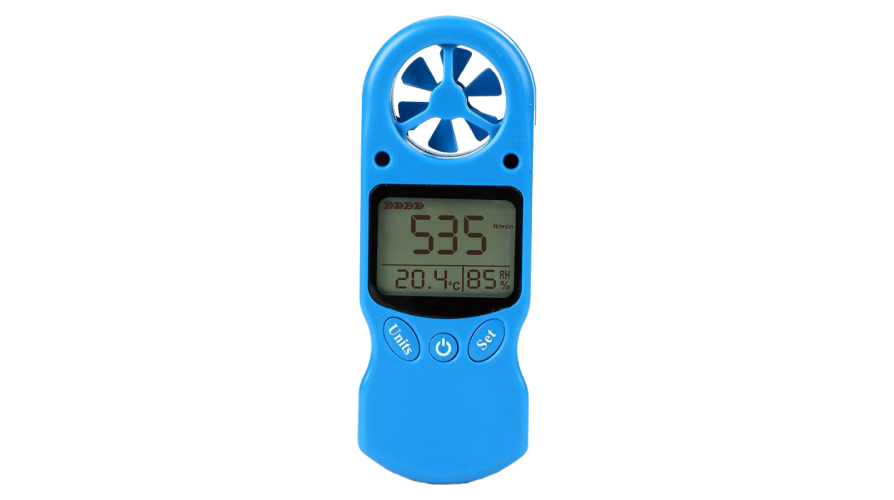How to Maintain and Care for Your Anemometer to Ensure Longevity
How to Maintain and Care for Your Anemometer to Ensure Longevity
Blog Article
Exploring the Features and Advantages of Anemometers for Climate Fanatics and Specialists
From mug anemometers to sonic anemometers, each type brings its one-of-a-kind collection of applications and benefits, dropping light on various facets of climatic conditions. As we dive into the features and benefits of anemometers, a much deeper understanding emerges not just of prevailing climate phenomena but likewise of the broader effects for industries like wind energy manufacturing and environmental research.
Significance of Anemometers in Weather Condition Tracking
Anemometers play an essential function in weather condition surveillance by giving accurate measurements of wind rate, aiding in forecasting and understanding weather condition patterns. These instruments, ranging from standard mug anemometers to modern-day ultrasonic anemometers, are essential for meteorologists, researchers, and weather enthusiasts alike.

Types of Anemometers and Their Applications
With the crucial role anemometers play in climate surveillance and projecting, comprehending the various kinds of these tools and their applications ends up being vital for professionals and enthusiasts in the area. The most common kinds of anemometers consist of cup anemometers, vane anemometers, hot-wire anemometers, and ultrasonic anemometers. Cup anemometers contain three or four mugs installed on horizontal arms that revolve with the wind, gauging its speed. Vane anemometers, on the other hand, make use of an easily turning vane to align with the wind instructions, offering both wind speed and instructions measurements. Hot-wire anemometers run based upon the principle of convective warmth transfer, where the cooling impact of the air flow is gauged to figure out wind speed. Ultrasonic anemometers make use of ultrasonic acoustic wave to calculate wind rate and direction accurately.
Cup anemometers are robust and appropriate for basic weather monitoring, while vane anemometers are favored for directional dimensions. Ultrasonic anemometers are non-intrusive and supply high accuracy, frequently utilized in research study and specialized climate surveillance applications.
Benefits of Using Anemometers in Forecasting
In meteorology, the utilization of anemometers offers invaluable advantages for boosting the precision of weather condition forecasting. Anemometers measure wind speed and instructions, giving critical information for anticipating weather patterns. By incorporating wind information right into forecasting models, meteorologists can much better recognize the motion of weather systems, anticipate adjustments in climatic conditions, and issue extra exact forecasts.
Moreover, anemometers play an essential function in evaluating potential climate risks. Keeping track of wind rates aids forecasters anticipate severe weather condition events such as storms, twisters, and winter season tornados with higher precision. This early warning system allows authorities to issue prompt notifies and apply required precaution, reducing the threats to life and residential property.
Additionally, anemometers aid in optimizing sustainable energy manufacturing. By analyzing wind patterns, meteorologists can determine ideal places for wind ranches and forecast power output, adding to click this link the reliable generation of wind power.

Anemometers in Wind Power Production
Given the critical duty anemometers play in offering accurate wind data for weather forecasting and danger analysis, their importance prolongs to the world of wind power manufacturing. Anemometers are essential instruments in the field of wind energy, where the measurement of wind speed and direction is important for establishing the feasibility and efficiency of wind turbine installations. By accurately measuring wind speeds at varying heights, anemometers help optimize the placement and design of wind turbines to take full advantage of energy outcome.
In wind ranches, anemometers are tactically put to gather real-time wind data that is used to evaluate the potential energy manufacturing of a website. This information contributes in establishing the financial feasibility of wind energy projects and in forecasting power generation to make certain grid security. Furthermore, anemometers aid in monitoring wind problems to maximize wind turbine performance, prevent damages from high winds, and make sure the security of personnel operating in the location of wind turbines.
Enhancing Weather Recognizing With Anemometers

Anemometers play a crucial function in improving our understanding of microclimates. These localized weather conditions can vary significantly from broader local projections, making it important to have exact information for certain areas. anemometer. By strategically placing anemometers in numerous areas, researchers can gather detailed details on just how wind behaves in different terrains, city atmospheres, or bodies of water
In addition, anemometers add to enhancing weather forecasting versions by providing real-time data on wind actions. This details is specifically important for predicting severe climate events, optimizing farming methods, and supporting sectors like air travel and maritime navigating. Generally, anemometers are vital instruments that allow us to dig much deeper right into the complexities of weather condition systems, ultimately bring about more accurate forecasts and better-informed decisions.
Conclusion
In verdict, anemometers play an essential function in climate monitoring and forecasting by determining wind rate and instructions. Anemometers additionally have applications in wind energy production, additional highlighting their relevance in both weather forecasting and renewable energy industries.
From cup anemometers to sonic anemometers, each kind brings its one-of-a-kind collection of benefits and applications, continue reading this shedding light on various elements of atmospheric conditions. These instruments, varying from standard mug anemometers to modern-day ultrasonic anemometers, are essential for meteorologists, researchers, and climate enthusiasts alike. The most common types of anemometers include cup anemometers, vane anemometers, hot-wire anemometers, and ultrasonic anemometers. Mug anemometers are durable and ideal for basic climate surveillance, while vane anemometers are preferred for directional dimensions. Anemometers are crucial tools in the area of wind power, where the measurement of wind speed and direction is essential for figuring out the expediency and effectiveness of wind turbine resource installations.
Report this page